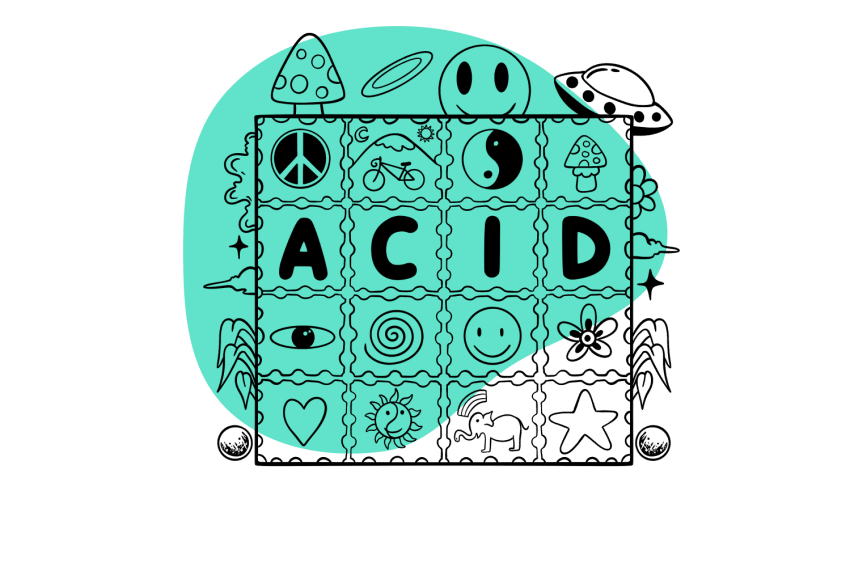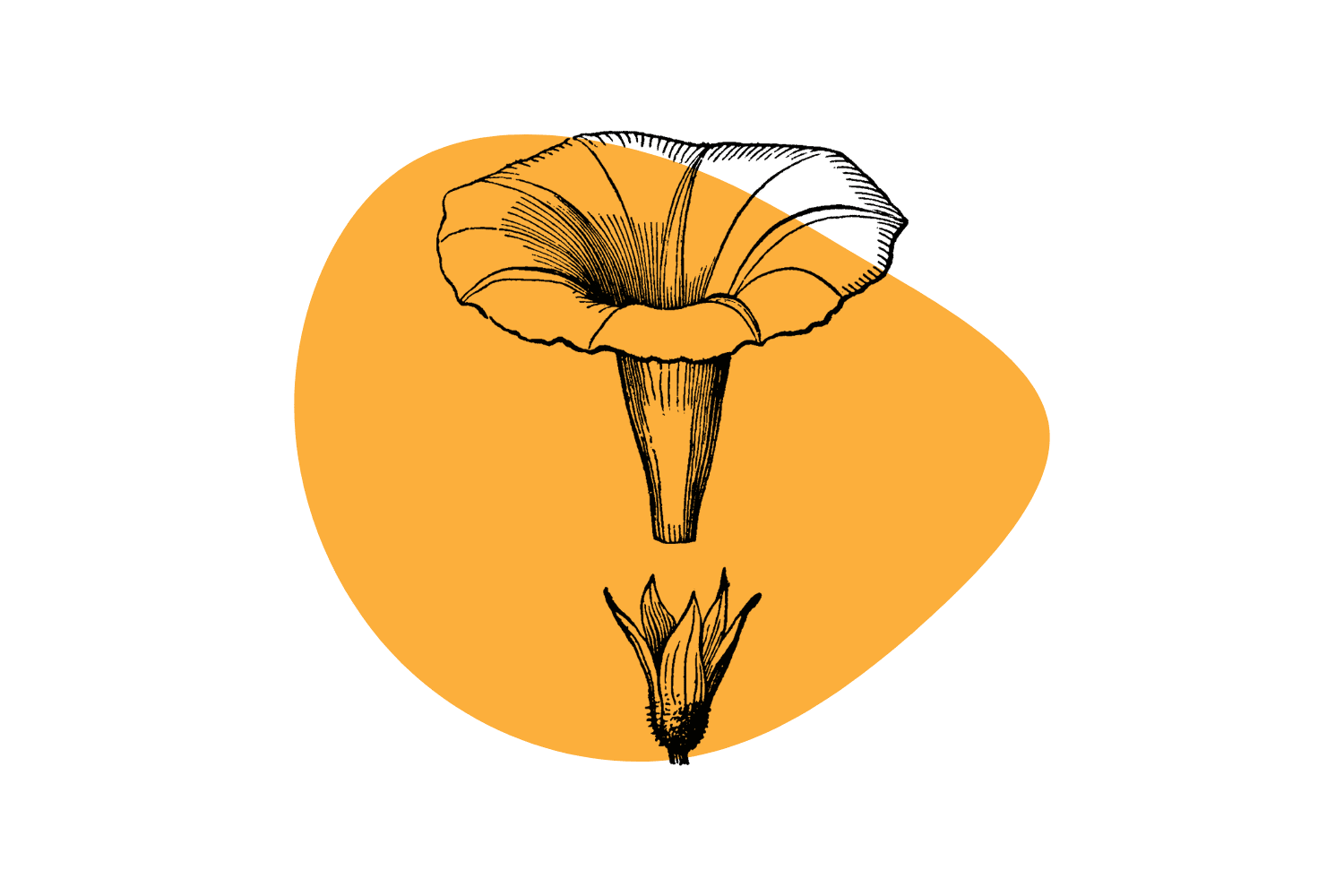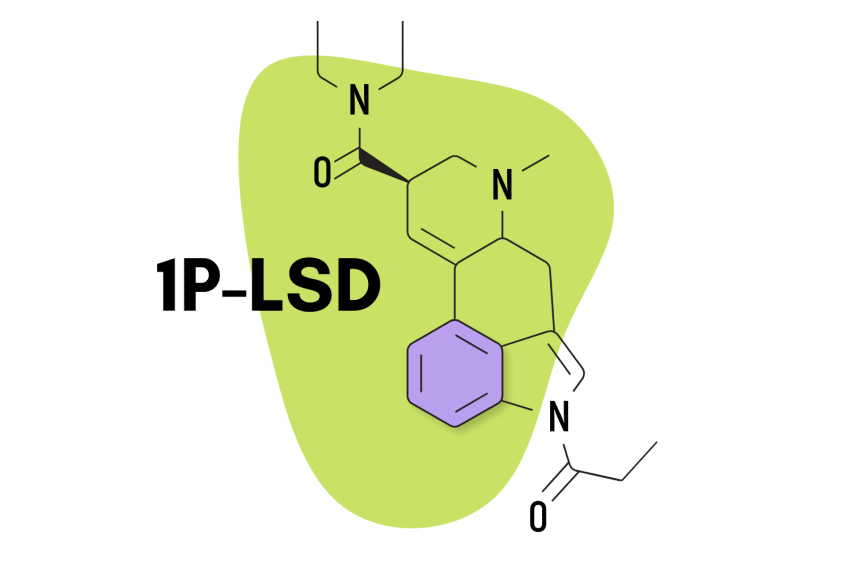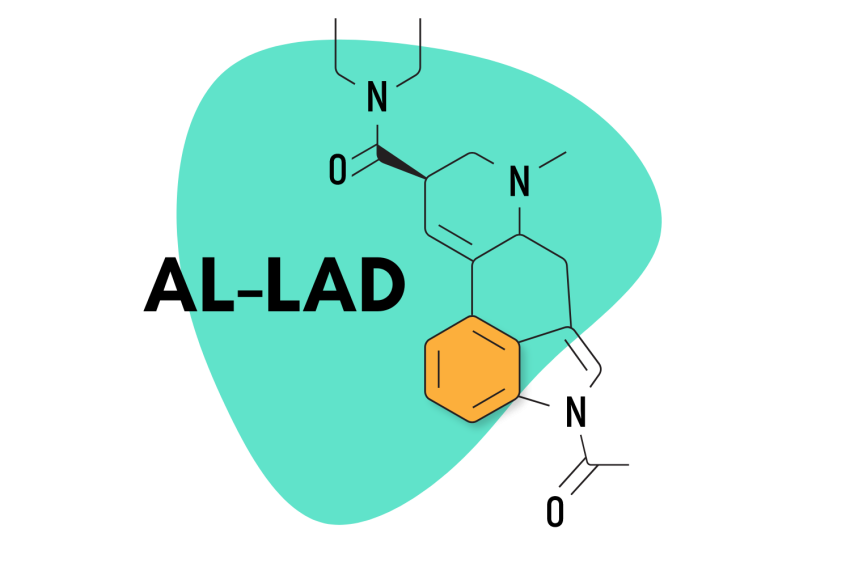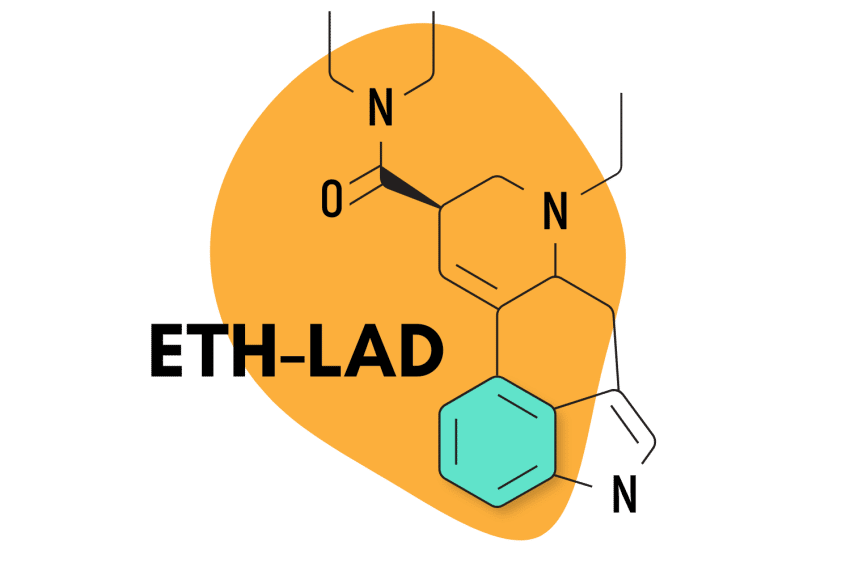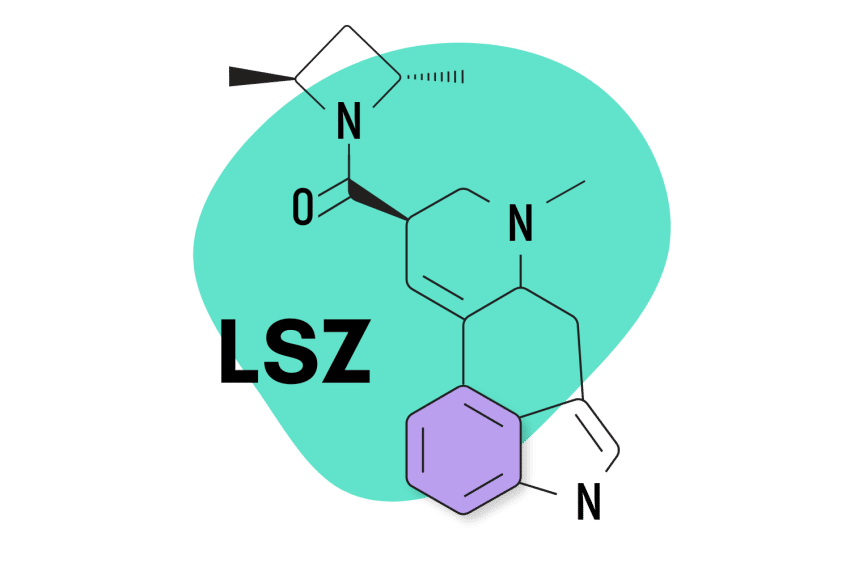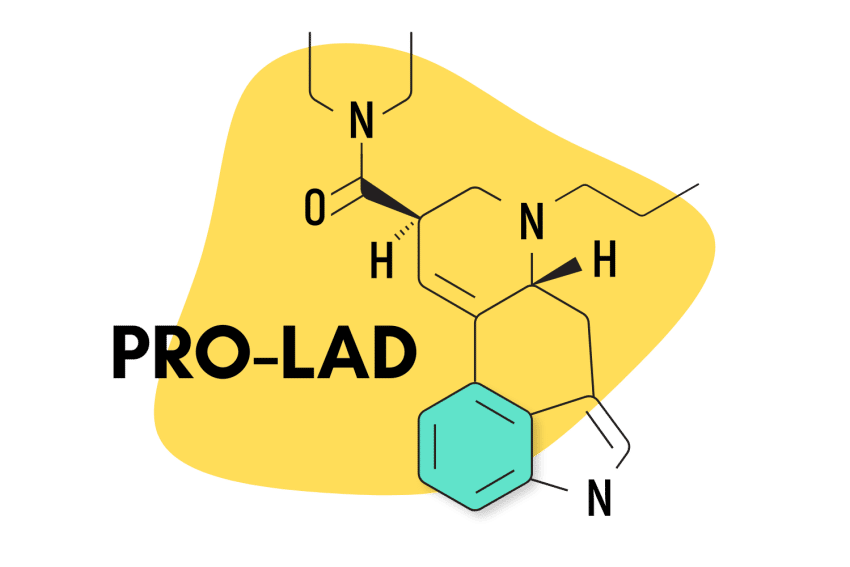The Morning Glory Vine: A Shamanic & Psychedelic Garden Variety
Modern analysis has revealed that a compound found in morning glory called LSA has similar effects to LSD — albeit a lot more sedating.
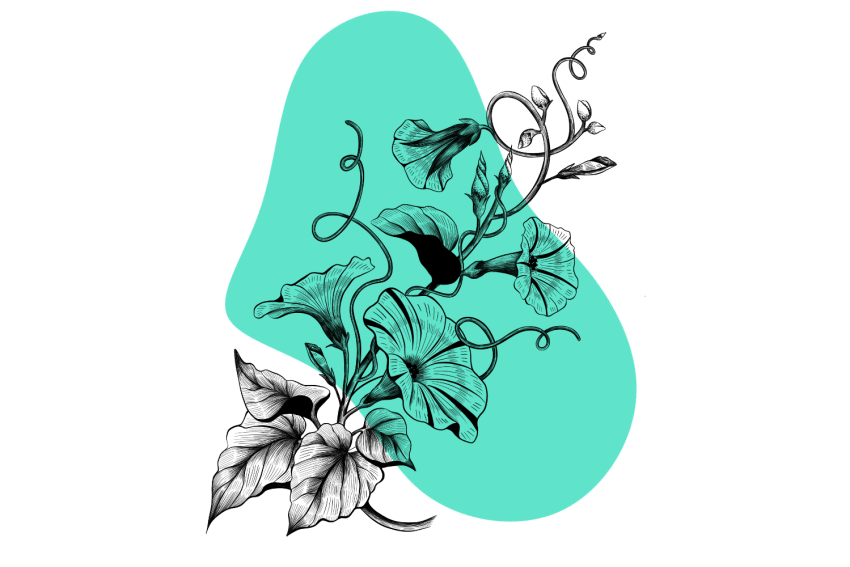
The morning glory vine (Ipomoea purpurea, Ipomoea tricolor, and others) is a small, creeping annual flower with heart-shaped leaves and trumpet flowers. It was originally from Central Mexico and the Caribbean but has since naturalized in gardens all over the world.
The seeds of this plant contain a compound called LSA (lysergic acid amide), which is closely related to LSD (lysergic acid diethylamide) and various other members of the lysergamide family of psychedelics.
There are three main differences between LSA and other popular lysergamides like LSD:
- LSA is naturally occurring — LSD is synthetically altered from LSA
- LSA is much less potent — the active dose is around 400 mcg compared to 80 mcg for LSD
- LSA is sedative — it induces sleep and a trance-like state
Because of the profound psychedelic effects of the morning glory vine, it was considered an essential part of Central American shamanism.
Here, we’ll explore several types of morning glory and compare their psychedelic profiles. We’ll also cover LSA extraction, morning glory seeds’ effects, cultivation tips, and more.
Morning Glory: Specs & Technical Details
| Active Ingredient | LSA (Ergine) |
| Level of Risk | Low |
| Most Common Side-Effects | Nausea, Body Load, Sedation |
| Duration of Effects | 6–8 hours |
| Legality | The plant is legal globally but concentrated LSA, a controlled substance in most parts of the world |
Guidelines for the Responsible Use of Morning Glory
- 🐍 I understand why psychedelics should be treated with respect
- ⚖️ I’m familiar with the laws surrounding psychedelics in my country & state
- 🍄 I’m familiar with and confident in the dose I’m taking (the dose range for Morning Glory is ~100 seeds (2.5g)
- 💊 I’m not mixing any medications or other substances with Morning Glory
- 🏔️ I’m in a safe & comfortable environment with people I trust
- 🐺 One of the members of my group is responsible and sober (AKA a trip sitter)
- ⏳ I have nothing important scheduled for after the trip
- 🧠 I’m in a sound & healthy state of mind
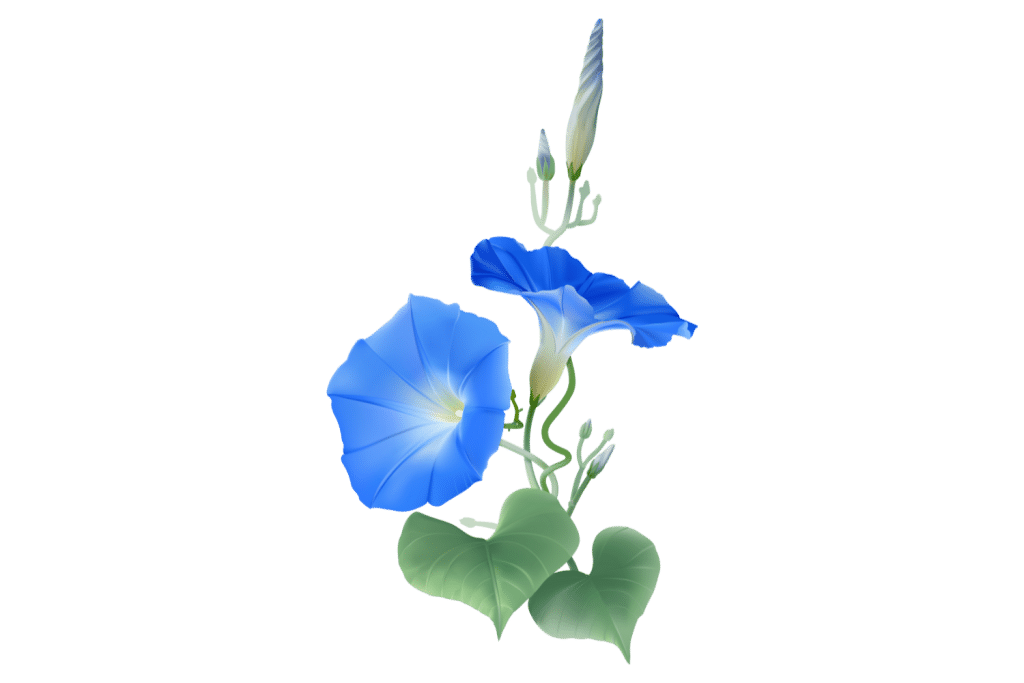
Traditional Use of Morning Glory
Writings by Albert Hofmann, the man who discovered LSD and LSA, suggest that morning glory was perhaps even more important than psilocybin mushrooms or mescaline-containing cactus peyote in terms of spiritual significance for indigenous cultures in Mexico [1].
Ethnobotanist Richard Evans Schultes compiled the early writings on Morning Glory in “A Contribution to Our Knowledge of Ololiuhqui of The Aztecs.” Several species of morning glory contain LSA and many other ergot alkaloids. These plants have a history of use with the Maya, Aztec, Mixtec, and Zapotec peoples of Mexico [2].
Examples of morning glory species used in Mexico by their Nahuatl names:
- Ololiúqui or Coatl-xoxouhqui — (Ipomoea corymbosa), also called “green snake.”
- Tlilitzin — (Ipomoea violacea) is found in garden centers today but is less common than Ipomoea purpurea or Ipomoea tricolor.
Long revered and cultivated, these varieties of morning glory connect shamans to the spirit world. In altered states, the practitioners could divine the future or communicate with deities to learn the true nature of their patients’ ailments.
Sometimes patients, rather than the shaman, would take the morning glory themselves, spend the night alone in a dark room, and emerge healed or with a new understanding of their condition.
Writings of early colonial missionaries document extensive magical preparations by priests, which included morning glory. These often involved venomous insects burned to ash and mixed with other plants as offerings and spells.
Morning Glory in Mayan Culture
The Mayans called morning glory “xtabentún,” and while the specifics of use are still kept secret by Mayans in the Yucatan, there is some knowledge of its role from how it appears in art and creation myths and the ancient text Popol Vuh.
Notably, Mayan midwives used xtabentún [9]. Mayan stories connect the plant to both death and birth in some Mayan stories. As part of their training, midwives undergo a “rebirth” process themselves. They learn to use the plant to induce childbirth, which, if not done correctly, can be extremely dangerous.
Early explorers noted that Mayans kept apiaries near morning glory plants and sometimes added the honey collected to blanché, an alcoholic drink still used today made from the Lonchocarpus violaceus tree.
Jonathan Ott has speculated that Mayans consumed psychoactive honey made active by bees harvesting pollen from xtabentún [10]. The drink is also sometimes called xtabentún when made from the nectar of morning glory.
While there isn’t rock-solid proof of ololiuhqui’s involvement, of interest is Mayan rituals involving psychedelic enemas [11]. Ancient art depicting the practice exists, and pottery used for the practice has been recovered. Nobody really knows exactly what was in the enemas, but morning glory is one of the proposed ingredients. Performed underground in darkness, and participants carried a “vomit bag” around their necks to deal with the ensuing purges.
The discovery earned Peter de Smet a Nobel Prize. De Smet personally conducted the rituals on himself for the sake of confirming their efficacy.
Morning Glory in Aztec Culture
In Aztec culture, plants were a gateway to connect with specific gods in the vast Aztec pantheon. Indeed, coatl-xoxouhqui was a divine plant.
While Morning Glory’s use continues to this day in Mexico, colonial Spanish chronicled much of what we know about ancient use [12].
Missionaries observing the Aztec high priests often mentioned terrible visions and communion with the devil, but the meticulous notes have now proven useful.
Known as Teopixqui, which in Nahuatl means “god guard,” the priests generally reserved the use of an impressive list of psychoactive substances for themselves. While at first glance it may seem excessive, Aztec culture had rigid views of who should use psychoactive substances and acceptable use.
Indeed, outside of specific rituals and celebrations, taking sacred plants or even drunkenness for pleasure was taboo. Priests consuming the morning glory trained from a young age in schools called “calmecac.”
Morning Glory & Divination
Explorers and ethnobotanists document the view of Morning Glory as a deity of its own. Those working with the plant entered into altered states of consciousness to communicate with the spirit world.
In A Contribution to our Knowledge of Rivea Corybosa, Richard Evans Schultes quotes Hernando Ruiz de Alarcon’s writings in 1692:
“It is remarkable how much faith these natives have in the seed, for, when they drink it, they consult it as an oracle in order to learn many things.” [13]
The view was that morning glory could reveal future events, find lost objects, heal or diagnose illness and even make one’s enemies fall ill. The Aztec culture took omens seriously, and apparently, through divination, leaders predicted the arrival of the Spanish.
Teotlaqualli: “Food of the Gods”
The Aztecs had sophisticated methods of using psychotropic substances, often combining substances. The creation of substances was a ritual in itself, with the preparation later part of other auspicious ceremonies.
“Teotlaqualli,” translated as “Food of the Gods,” is a black topical containing several psychoactive substances for communication with various gods.
In Aztec art and legends, many of the gods have black skin, a detail some have attributed to the application of Teotlaqualli.
The preparation of Teotlaqualli was complex [14]. An early chronicler Acosta documented how to make Teotlaqualli:
- Boys training as priests at the Calmecac would gather poison animals like spiders, scorpions, centipedes, lizards, and vipers
- Then burn the creatures in a brazier inside a temple
- The ash is then mixed with a large amount of tobacco
- Addition of pulverized morning glory seeds
- More living poison insects added
- To this day, other ingredients are unknown
The result is a paste rubbed on priests before rituals. Said to eliminate all fear and enter into a state of mind for communication with the gods.
It’s unclear what specific gods these were, but there is some reference to:
- Tezcatlipoca — an ambivalent god with good and bad qualities able to cure or send illnesses
- Ixtlilton — a gentle god of medicine wearing an obsidian mask, brought darkness and restful sleep to children
- Huitzilopochtli — the solar deity and god of war who fed on the blood of sacrifices to protect humans
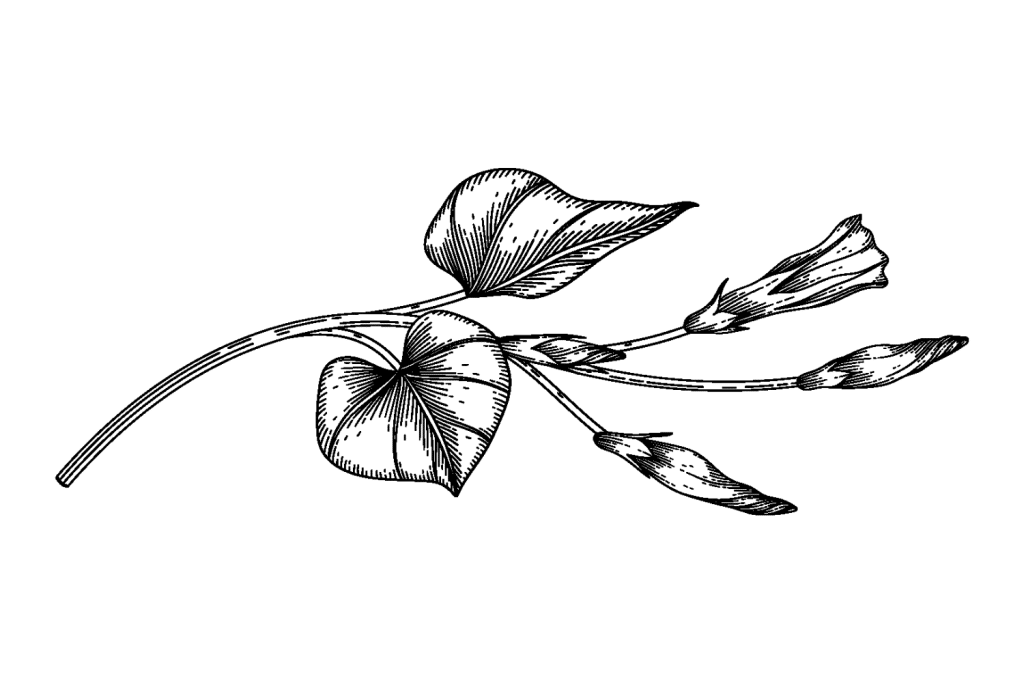
Psychoactivity of Teotlaqualli
There is suspicion that Teotlaquaili was psychoactive. Scholars have theorized that the tar created by burning ingredients in braziers is hydrophobic — meaning it would be fat-soluble and pass through the skin.
Also highlighted is the large quantity of tobacco. High doses of tobacco are psychoactive and potentiate other substances. Of interest as well is the venom of poisonous insects, adding additional effects.
Aztec Rituals with Teotlaqualli
The Aztecs practiced human sacrifice to a staggering degree. Typically prisoners and not their own people, the work was not light.
Spanish chroniclers document the ascent of the renowned Aztec Emperor Montezuma.
Upon assuming his post, he dressed as a high priest in gold, precious stones, and feathers, welding his ritual knife and jade bowls symbolizing status. Montezuma was then anointed with Teotlaqualli before performing 200 human sacrifices to consecrate a new temple.
The Emporer acting as high priest was a rare occasion. And no doubt, using a substance to “remove fear” before cutting open the chests of hundreds of people (some sedated with plant preparations, most not) to remove their beating hearts might require something to take the edge off.
There is also documentation of soldiers smearing Teotalqualli on their faces before battle, but it was mostly the priests performing functions high in mountains or in subterranean locations who used the preparation.
Medical Use of Morning Glory
Richard Evans Schultes’ studied the medicinal uses of morning glory in detail. His writings focused on one particular variety of morning glory, Rivea corymbosa, known as “oloiuhqui.” The word oloiuhqui refers to the plant’s seed, meaning “round thing.”
An extensive list of reported medical uses exists, including:
- Aphrodisiac & sexual debility
- Arthritis
- Cold/flu
- Dislocation & bone fractures
- Gas & bloating
- Pain & inflammation
- Pelvic pain & cramping in women
- Poor eyesight & blindness
- Syphilis
- Tumors
- Venereal disease
Morning Glory in the Western World
In 1947, Albert Hoffman received samples of morning glory seeds and analyzed their contents. He shared his findings and shocked the conference attendees with his insight that one of the most common garden weeds was also a potent source of psychedelics.
Ergot alkaloids are the precursors to LSD, PRO-LAD, ETH-LAD, LSZ, and various related psychedelics.
These alkaloids occur in a fungus, which commonly grows on grain, such as rye, called Claviceps purpurea. Some speculate that ergot is the source of ancient psychedelic alcoholic fermentations dating back over 10,000 years [3].
In 1956, the CIA experimented with LSA as part of the infamous MK-ULTRA mind control projects. The CIA allegedly used LSA extracts from Ipomoea corymbosa obtained in Mexico and Cuba.
Morning glory remains mostly obscure as a psychedelic in the Western world, largely due to the sedative effects and higher risk of nausea and griping compared to more “modern” psychedelics like LSD.
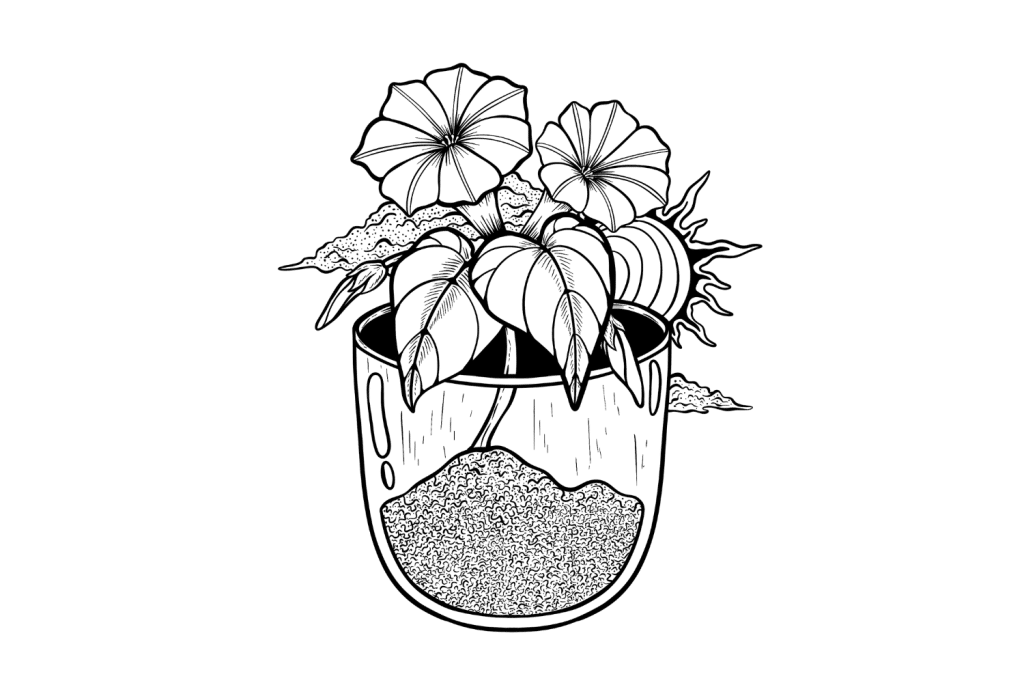
Morning Glory Active Ingredients
The primary active ingredient in morning glory seeds is LSA — but other ergot alkaloids are present that contribute to the overall effects as well. Some of these ingredients are also responsible for the adverse side effects of the plant.
Like other tryptamine-based psychedelics, LSA binds to the 5HT2A receptor — which produces a cascade of effects responsible for the psychedelic experience.
LSA also serves as a precursor for other semi-synthetic psychedelics, including LSD:
- Lysergic acid amide (LSA or Ergine) — The known and established psychedelic compound in morning glory.
- Ergonovine (Ergometrine) — used to inhibit bleeding after birth or abortion
- Chanoclavine — stimulates dopamine receptors in the brains of mice [5]
- Elymoclavine — found to have stimulating effects in animals [6]
- Lysergic Acid — many ergot alkaloids which have uses in medicine, including LSD, come from lysergic acid
- Lysergol — like lysergic acid, this alkaloid is a precursor to other alkaloids used in medicine
- Agroclavine — a precursor for the synthesis of other ergot alkaloids
- Lysergic acid α-hydroxy-ethylamide — the effects of this alkaloid in humans remains unknown
- Ergobalansine — this alkaloid hasn’t been studied since the 1950s but is believed to have little psychedelic effects
Alkaloids Found in Different Species of Morning Glory Vine [4,8]:
| Ergot Alkaloid | Ipomoea corymbosa | Ipomoea asarifolia | Ipomoea violacea | Ipomoea purpurea | Ipomoea tricolor |
| Lysergic acid amide (Ergine) | ✅ | ✅ | ✅ | ✅ | ✅ |
| Ergonovine (Ergometrine) | ✅ | ✅ | ✅ | ✅ | ✅ |
| Chanoclavine | ✅ | ✅ | ✅ | ✅ | ✅ |
| Lysergol | ✅ | ✅ | ✅ | ✅ | ✅ |
| Agroclavine | ✅ | ✖️ | ✖️ | ✖️ | ✖️ |
| Lysergic acid α-hydroxy-ethylamide (LSH) | ✅ | ✖️ | ✖️ | ✅ | ✅ |
| Ergobalansine | ✖️ | ✅ | ✖️ | ✖️ | ✖️ |
Morning Glory & Ergot Fungi Symbiosis
Recent studies show that the ergot alkaloids found in morning glory result from a symbiotic relationship between various Periglandula spp. (an ergot fungus) and the morning glory plant [7].
It’s the fungi that produce LSA, not the plant itself. This was made clear in a study that treated morning glory seeds with a fungicide and found the harvested plants contained none of this psychoactive compound.
The ergot fungus lives inside the plant and shares some sort of symbiosis (the details of this relationship remain unknown).
Effects of Morning Glory: What Does It Feel Like?
The effects of morning glory are comparable to that of LSD but much less potent. It also creates a strong sedating effect, which many describe as “dreamlike” or “trance-like.”
Users may feel as though their depth perception is off and experience visual hallucinations (patterns and textures appear to be moving and merging).
About halfway into the trip, morning glory causes an undeniable urge to rest. Users may not fall asleep immediately, but they will feel a sense of “heaviness” that forces them to find a comfortable place to lie down.
People who fall asleep on morning glory experience wild, vivid, and sometimes even lucid dreams. For this reason, morning glory and other LSA-containing plants like Hawaiian baby woodrose are often used as oneirogens (dream-inducing substances).
The effects of a standard dose of morning glory seeds typically last about 6–8 hours or until you wake up the following morning. Some people report a lingering sense of lucidity about 24 hours after the experience.
Morning glory also has some unwanted side effects that are pretty common at psychoactive dosages. The main side effects, besides sedation, are nausea and vomiting. This is likely due to a cocktail of other alkaloids in the morning glory plant — some of which are toxic.
Other side effects include a heavy “body load,” meaning strong physical sensations (such as cramping or general discomfort) and a sense of heaviness.
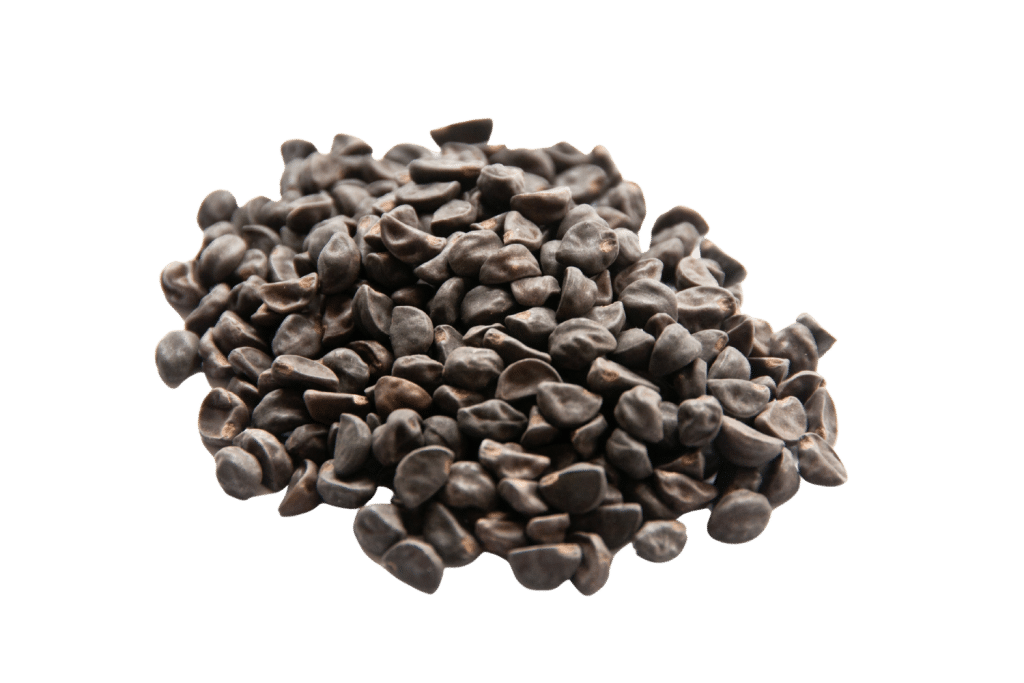
Morning Glory Seeds Dosage
Typically, one consumes morning glory seeds by eating the seeds or grinding them up and putting them in capsules.
However, with the intent of avoiding nausea, many will extract LSA from the seeds. There are several methods of extraction, including tinctures, cold water extraction, and acid-to-base (A/B.)
The easiest way to take morning glory is to simply chew and swallow the seeds. Normally, the dose is around 50–150 seeds or about 1–3 grams.
Alternatively, some users prefer to make a liquid extract of the seeds first (instructions provided below). The dose of this extract depends on the concentration. A 1:1 extract should follow the same dosage guidelines as the raw seeds but converted to milligrams. A 1:2 extract will require twice as much liquid as the desired dose. And so-on.
Morning glory seeds each weigh, on average, about 25 mg and contain 10 mcg of LSA.
Morning Glory Seed Dosage Chart
| Approximate Number of Seeds | Approximate Weight of Seeds | Approximate Dose of LSA | |
| Microdose | 10 Seeds | 250 mg | 100 mcg |
| Threshold Dose | 50 Seeds | 1.2 g | 500 mcg |
| Standard Psychoactive Dose | 100 Seeds | 2.5 g | 1 mg |
| Heavy Dose ⚠️ | 300 Seeds | 7.7 g | 3 mg |
How to Extract LSA From Morning Glory
Because of nausea associated with morning glory, LSA extraction has become a common practice. There are many methods to reduce the side effects, from eating sprouted seeds to full-blown chemical extraction of alkaloids.
The most popular methods include the following:
1. LSA Cold Water Extraction
This is a longstanding technique still used in Mexico. The seeds are essentially ground and soaked in water.
To perform cold water extraction of LSA:
- Grind the chosen dose (typically 100 seeds or 2.5 grams) into a fine powder with a coffee grinder or mortar and pestle.
- Fill tea bags with the powder or bundle them inside a coffee filter. Be sure the powder is sealed inside.
- Put the powder inside 1 cup of water and wait three hours.
- Remove the tea bags and consume slowly. Take a small amount (around a quarter) and wait 30 min. Then repeat.
2. Extract With Alcohol
This is an active LSA tincture made from an alcohol extraction of morning glory.
A tincture must have an established ratio to be safely dosed. We recommend a seed-to-liquid ratio of 1:5 (seeds to liquid), meaning that 1 mL of tincture is about 5 g of seeds.
When making a tincture, be sure to only use 100% petroleum ether (commonly called naphtha) in the wash step. Additional compounds can be a health risk.
Here is how to make a morning glory tincture:
- Grind the chosen dose into fine powder.
- Wash the seeds with a nonpolar solvent like petroleum ether to remove unwanted compounds. Combine 5 g of seed powder with 250 mL petroleum ether inside a jar and shake well. Let sit for 1 -2 hours.
- Pour the mixture through a coffee filter and spread the remaining seed powder on a flat surface to evaporate the ether. It must be completely dry with zero smell, which can take a few days.
- Add the seed powder to a jar with ethanol and let it sit for several days. This extracts the LSA.
- Pour the mixture through a coffee filter and keep the liquid. The remaining liquid is the tincture.
Is Morning Glory Legal?
Morning glory seeds are legal worldwide; however, LSA is a scheduled substance. As an established cultivar, growing morning glory is easy and common. In fact, it is difficult to stop morning glory from growing in many areas.
The seeds in garden centers are sometimes coated with fungicides, as morning glory is susceptible to fungal infections. Some companies coat the seeds to prevent consumption of LSA, as fungicides cause an increase in gastrointestinal upset.
Morning Glory FAQs
1. Which Species of Morning Glory Contain LSA?
Most research and anecdotal reports support the idea that Ipomoea tricolor (AKA “Heavenly Blue”) and Ipomoea purpurea (AKA “Morning Call”) contain the highest concentrations of LSA by weight.
However, the concentration of LSA will vary depending largely on growing conditions. Most species contain psychoactive alkaloids but are too low to produce notable psychedelic effects without also causing negative side effects.
2. What Morning Glory Seeds Have the Most LSA?
The species most used traditionally were Ipomoea corymbosa and Ipomoea violacea, even though these species contain relatively low levels of LSA. Between them, Albert Hoffman’s original 1947 analysis found that Iopmea violacea has six times the LSA of Ipomeoea corymbosa.
3. Do All Morning Glory Seeds Contain LSA?
Not all morning glory seeds contain LSA. This is because the ergot fungi are not present in all species of morning glory. Even when ergot is present, there is variability between seeds. However, across many seeds, the amount of active alkaloids often seems to even out.
4. Are There Other Plants That Contain LSA?
Morning glory contains LSA because of the ergot fungus growing within it. Ergot also occurs in the Hawaiian Baby Woodrose (Argyreia Nervosa) and sleepy grass (Achnatherum robustum.) There may be other plants with ergot that have yet to be discovered.
5. What Does Morning Glory Look Like?
Morning glory typically found in garden centers is Ipomea violacea and Ipomea tricolor. These annuals are grown for their beautiful funnel-shaped white, blue, and purple flowers on long vines. The plant tends to bloom in the early morning, hence the name.
6. Are Morning Glories Easy to Grow?
It is very easy to grow, often climbing trellises several meters in a single season. Many know the plant as a weed because it spreads rapidly in certain conditions as a groundcover. A common name for morning glory in North America is “bindweed.”
References
- Hofmann, A. (1971). Teonanácatl and Ololiuqui, two ancient magic drugs of Mexico. Bull. Narc, 23(1), 3-14.
- Schultes, R. E. (1941). Contribution to Our Knowledge of Rivea corymbosa.
- Muraresku, B. C. (2020). The Immortality Key: The Secret History of the Religion with No Name. St. Martin’s Press.
- Steiner, U., & Leistner, E. (2018). Ergot alkaloids and their hallucinogenic potential in morning glories. Planta Medica, 84(11), 751-758.
- Watanabe, H., Somei M., Sekihara, S. I., Nakagawa, K., & Yamada, F. (1987). Dopamine receptor stimulating effects of chanoclavine analogues, tricyclic ergot alkaloids, in the brain. The Japanese Journal of Pharmacology, 45(4), 501-506.
- Yui, T., & Takeo, Y. (1958). Neuropharmacological Studies On a New Series Of Ergot Alkaloids Elymoclavine As a Potent Analeptic On Reserpine-Sedation. The Japanese Journal of Pharmacology, 7(2), 157-161.
- Beaulieu, W. T., Panaccione, D. G., Quach, Q. N., Smoot, K. L., & Clay, K. (2021). Diversification of ergot alkaloids and heritable fungal symbionts in morning glories. Communications Biology, 4(1), 1-11.
- Nowak, J., Woźniakiewicz, M., Klepacki, P., Sowa, A., & Kościelniak, P. (2016). Identification and determination of ergot alkaloids in Morning Glory cultivars. Analytical and bioanalytical chemistry, 408(12), 3093-3102.
- García Quintanilla, A., & Eastmond Spencer, A. (2012). Rituales de la x-táabentun (Turbina corymbosa) y de los mayas yucatecos. Cuicuilco, 19(53), 257-281.
- Ott, J. (1998). The delphic bee: bees and toxic honey as pointers to psychoactive and other medicinal plants. Economic Botany, 260-266.
- de Smet, P. A., & Hellmuth, N. M. (1986). A multidisciplinary approach to ritual enema scenes on ancient Maya pottery. Journal of Ethnopharmacology, 16(2-3), 213-262.
- Carod-Artal, F. J. (2015). Hallucinogenic drugs in pre-Columbian Mesoamerican cultures. Neurología (English Edition), 30(1), 42-49.
- Schultes, R. E. (1941). Contribution to our knowledge of Rivea corymbosa.
- Elferink, J. G. (1999). Teotlaqualli: the psychoactive food of the Aztec gods. Journal of psychoactive drugs, 31(4), 435-440.

